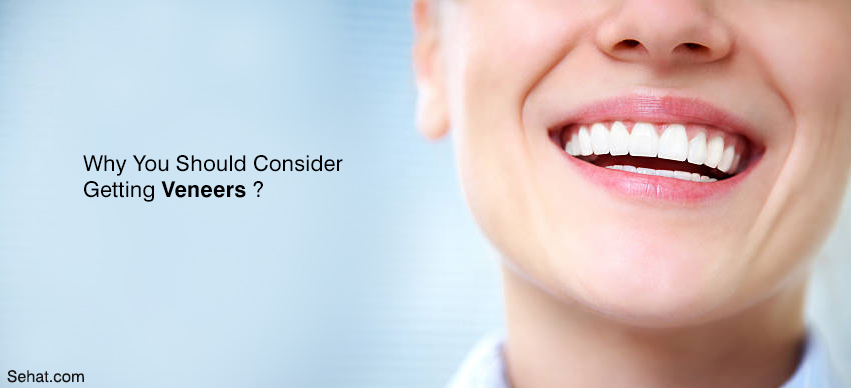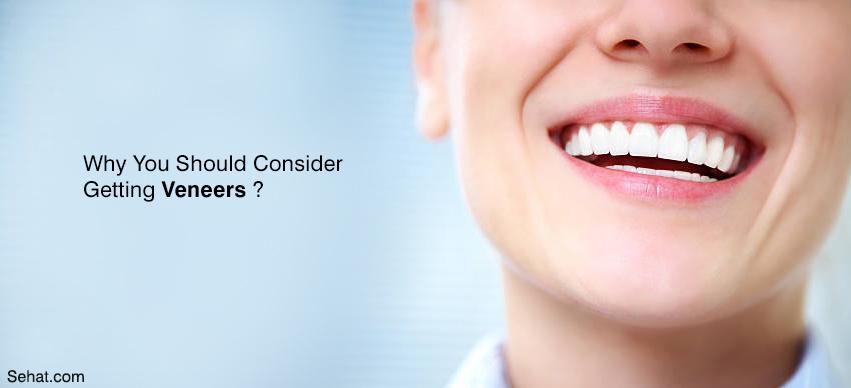Microplastics in Humans: Understanding the Risks and How to ..
8 Min Read


Have you been hesitant to smile openly at strangers during a meeting, party, interview? Is it because you have been self-conscious about your malformed, unevenly spaced, or even coffee-stained teeth? Maybe getting veneers is an option you would like to consider! Dental health is just as important as any other self-care regime, and you deserve to show your pearly whites boldly.
This dental treatment has been used as far back as the 1930s. Unlike today’s practical uses, it served as more of an aesthetic (check it out) than something you’d use other than improving appearances. Though many disadvantages came from old techniques and outdated equipment, the advancement of such elements has propelled dental technology so much it has become a standard choice for clients.
Have you made up your mind to get veneers for yourself? If you answer no, then the reasons below might change your mind. Read on to find out the various benefits of getting an appointment today.
Veneers are made of materials that coat teeth like a protective shell. They are a thin layer placed in the anterior part (the front-facing parts when you smile) for aesthetic value. They can be made from various materials, but the most common being;
These are the most common types of veneers. They can be applied during your appointment, which means they efficiently fix minor problems, such as chipping and cracking your pearly whites. It can also address slightly crooked and oddly spaced front teeth by filling in the gaps present.
It is natural to assume this type is the most affordable, then. Compared to its other counterparts, composites are time-efficient, and the aftercare is more comfortable, but they are not very durable or stain-resistant. Thorough oral hygiene is needed to maintain this type of veneer.
These are the most aesthetically inclined types of veneers that give astounding transformative outcomes. Though they require more than one appointment, and the treatment is more prolonged, the end-result they give is a significant investment altogether.
Porcelain types are customized to fit your teeth' size and bring forth your choosing's perfect color and shape. Unlike composites, this one is stain-resistant, so if you're wondering how much veneers cost for soda-stains, check porcelain types out. Take note that porcelain is also ideal for countering minor dental issues and discoloration— for that confident and long-lasting pearly whites.
Instant veneers get their role from their name itself: an instant, pre-made fit for those with time constraints but still want that confident smile. It is a cross between composite and porcelain when it comes to durability and fast application. Though it is not tailored like porcelain, it is still durable and enables you a beautiful grin.
Although we have mentioned this earlier, let us go a little bit more in-depth with this benefit. This is the most common reason why people opt for an application of veneers. Chips and cracks are inevitable for everyone, especially those aged 25 and above. And although your dentist can address this, there is a possibility it will not be a clean job since it is not done cosmetically.
This is where veneers enter the scene. This appointment focuses on how your teeth appear above all, so your dentist or professional will make sure those minor dental problems will be covered and make sure your white rows will look flawless. These look like real teeth, even down to how the light reflects on it. You would be sure no one will suspect you have it, nor will they know they were once worn and stained.
When we mentioned your end-result of rows and rows of chalk-white teeth, we did not mean those you see in a toothpaste commercial. That would just make it seem fake, and instead of making your teeth pleasing to the eyes, it would look falser instead.
With this dental treatment, the dentist will note your teeth structure and color—the ones with no problem—to send them to a lab. It will create a custom-fit veneer for your contour (with a non-stained color). Take note that teeth whitening, as per ada.org, is different from veneers. While the latter is a layer placed on top of your pearly whites, the former use bleach for a whiter appearance.
Veneers are non-invasive, especially porcelain types. Basically, a portion of the front of your teeth will get scraped down (about half a millimeter) for cleaning purposes, and so the cement sticks on the teeth. After the cement, the layer of veneer will be applied, and the dentist will have small adjustments to the color, size, and shape accordingly.
There will be no need for anesthesia unless the client wishes for it. The results are also instantaneous and will only get better after each appointment.
Dental porcelain veneers are semi-permanent once applied, which means with proper maintenance, it will stay for as long as 15 years. They are non-porous unlike enamel (what our teeth are made of), so it is stain and decay-resistant. Say goodbye to painful cavities and coffee/soda-stained teeth after application!
Unlike other dental treatments such as teeth bleaching, you will need to have several specific rules to follow if you want to maintain the effects. With Veneers, there are just a few specific rules to abide by, and one of them is to have healthy and routine oral hygiene. Brush twice a day and floss once a day, then have your annual/bi-annual check-up with your dentist.
As we mentioned above, teeth can be strong, especially when you have your required calcium intake. But as time passes by, the enamel can get worn and damaged by some elements, such as highly acidic food, diseases such as GERD, or ironically—overbrushing. Once the enamel is gone, you cannot do anything to naturally bring it back unless you take yourself to the dentist.
Veneers can prove to be a suitable enamel replacement. Not only is it durable, but it is also versatile against other elements like acidic food/fluids or overbrushing, all while giving you complete and healthy white teeth.
If getting frequent teeth whitening appointments are getting tedious for you, then getting veneers can replace that chore easily. Most of the clients finding teeth whitening do so because they are heavy drinkers, smokers, and make other enamel-damaging habits. Frequency can cost the customers a lot more money than applying veneer.
Veneers are permanent. This means you only need seldom check-ups and maintenance compared to frequent teeth whitening sessions. You will not need to worry about the repercussions of your habits since porcelain types can withstand smoking and coffee-stains easily.
Brushing can do more harm than good, but since these are sturdier than enamel, it can encourage you to have better oral hygiene than before due to hesitancy. Studies have shown people take care of their veneers better because of the absence of their fear of overbrushing. It also serves as their second chance to have more confidence in their smile.
Having this protection also educate the customers about teeth-damaging food and drinks, which they ultimately minimize, if not avoid. This results in their veneers lasting longer than expected.
Say you already have a veneer applied. What is the next step? Taking care of them, of course. This enamel protection can be durable but neglecting them can shorten its life service in half or even more. Because porcelain veneers are done in more than one appointment, it is essential to make sure they are in perfect condition before you replace them a decade later.
Dentists suggest using a non-abrasive toothpaste, alcohol-free mouthwash, and an easy-glide floss. This sounds basic, but it can help your veneers and oral hygiene in the long run. If you are already careful with them, why not elevate your toothpaste's quality a bit and purchase premium floss for it?.
Also, avoid grinding your teeth, which can damage the edges of the veneers on your teeth. Bruxism is a condition where a person grins their teeth during sleep, and it is recommended to use a mouthguard after your oral hygiene at night. This condition cannot be stopped but grinding during the day should be avoided.
Eat-in moderation. Though veneers are durable and resistant to acidic and stain-prone food, it does not mean you can eat them regularly. Yes, this can be replaced, unlike enamel, but before you eat that hard candy, think about the cost you will be paying as well as the time you will be spending during the sessions.